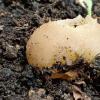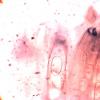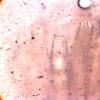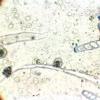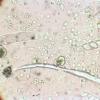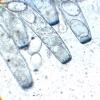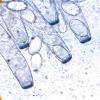
29-12-2025 08:30
Hello.A tiny ascomycete sprouting under Juniperus

29-12-2025 10:15
Hulda Caroline HolteHello, I found and collected this propoloid ascom

29-12-2025 09:38
Oskari VirtanenHi,could anyone help me identify this, I suspect P

28-12-2025 12:08
Margot en Geert VullingsThis possible Karstenia was found on the bark of d

21-12-2025 21:32
Pol DebaenstHello, Garden, Burgweg 19, Veurne, BelgiumOn 10/1

26-12-2025 21:19
Arnold BüschlenPithyella chalaudii Priou. Ist als Bryoparasit in

21-12-2025 09:32
Hello.A tiny ascomycete found embedded in wood in

18-12-2025 21:17
Pol DebaenstThe identification took me to Byssonectria deformi
Peziza blueing
Malcolm Greaves,
17-06-2016 00:04
Thanks
Mal
Hans-Otto Baral,
17-06-2016 07:24

Re : Peziza blueing
I am not sure why your photo has such a red tone. Which reagents did you apply, Melzer or Lugol? It is necessary to see the yellow colour of iodine in order to say something. For instance if you add KOH, the reaction logically disappears.
Zotto
Zotto
Malcolm Greaves,
17-06-2016 10:33
Hans-Otto Baral,
17-06-2016 10:52

Re : Peziza blueing
The phenomenon exists that higher concentrations of Lugol suppress the blue reaction. this is some kind of hemiamyloid, which is in fact a change to a dirty rid-brown. I am not sure if this is the case here. You can easily test this by adding more Lugol so that the ascoplasm gets distinctly stained.
You can also test KOH-pretreatment. After washing with water you can repeat the test, the effect should then be absent.
You can also test KOH-pretreatment. After washing with water you can repeat the test, the effect should then be absent.
